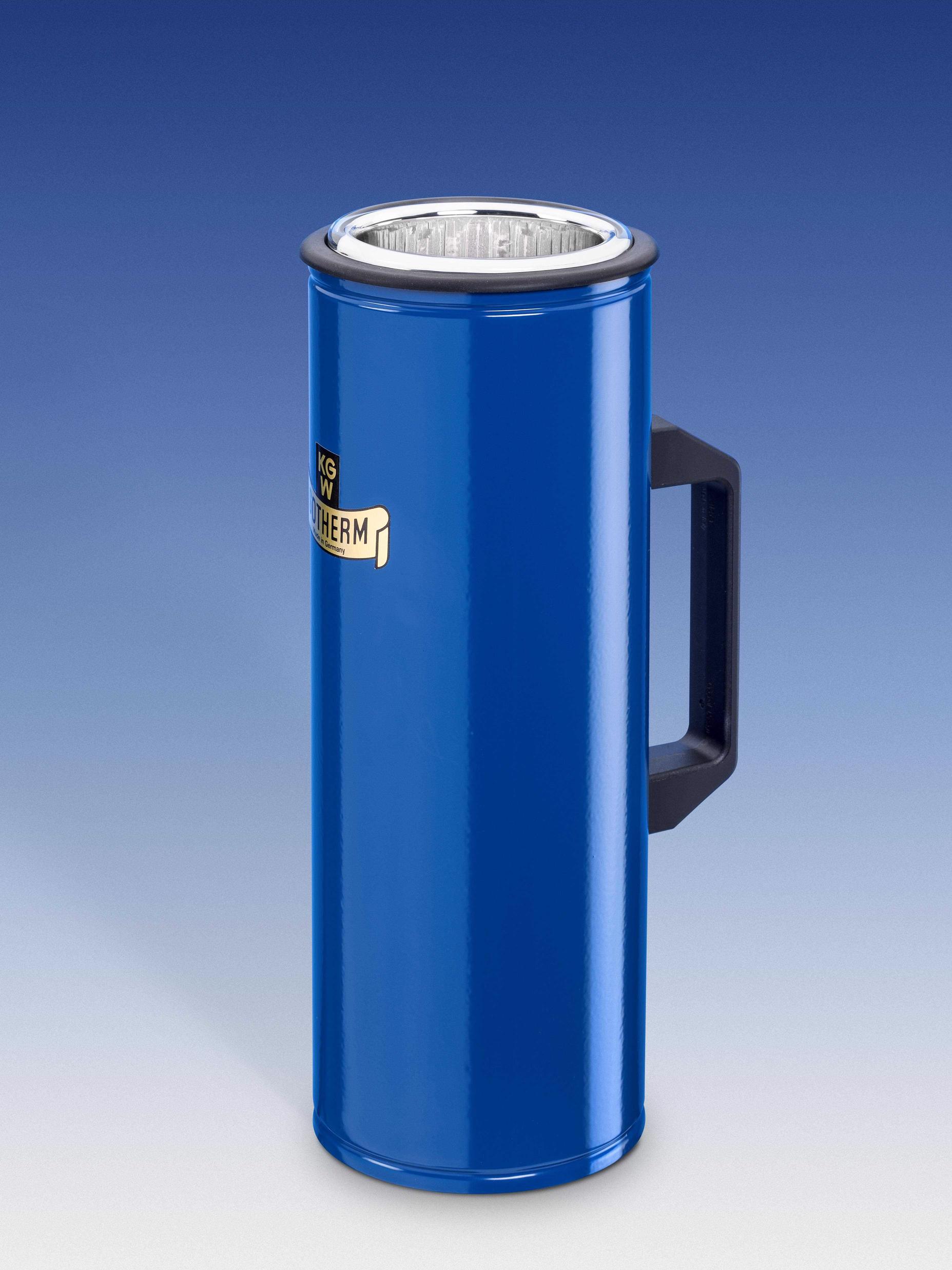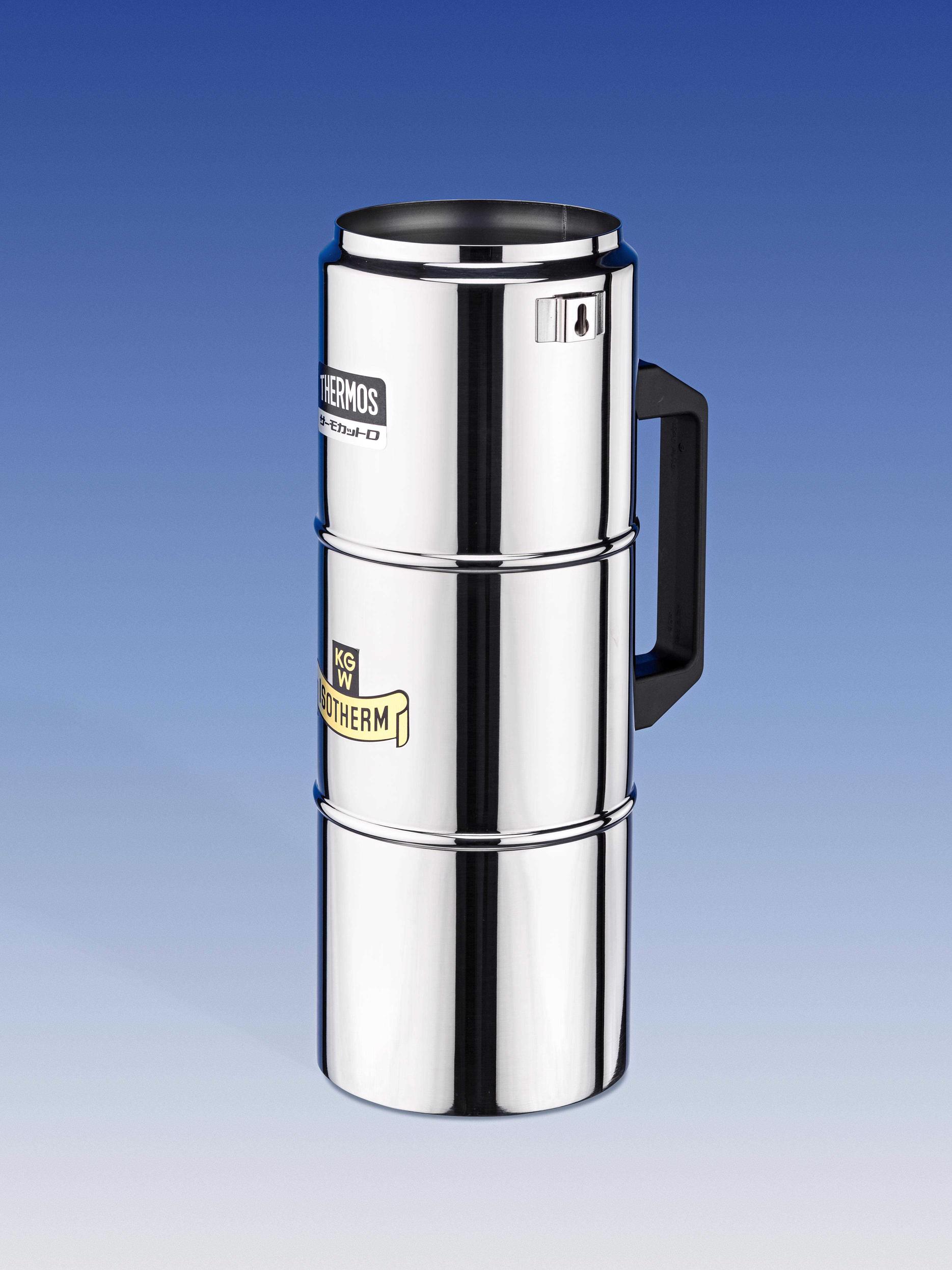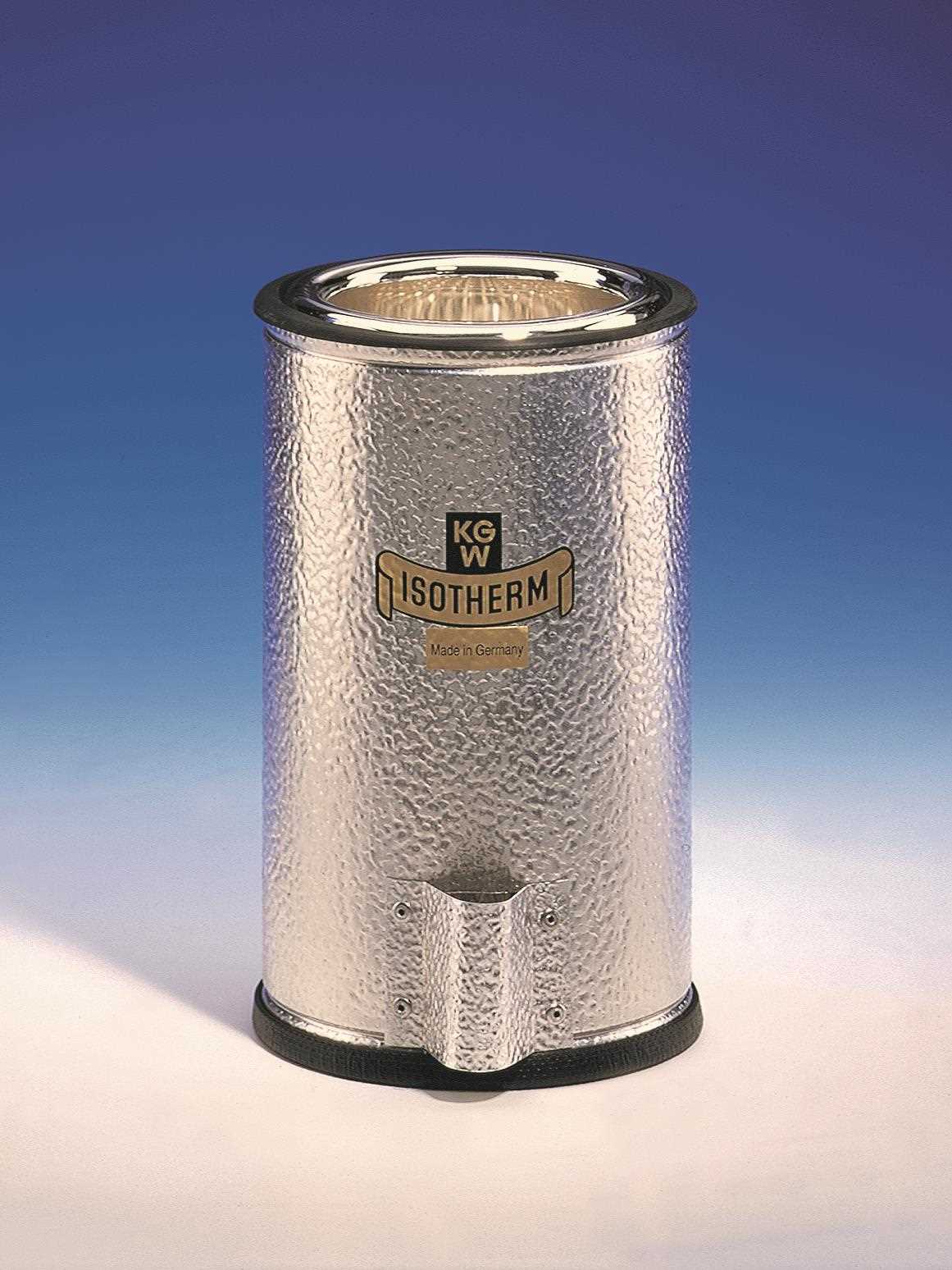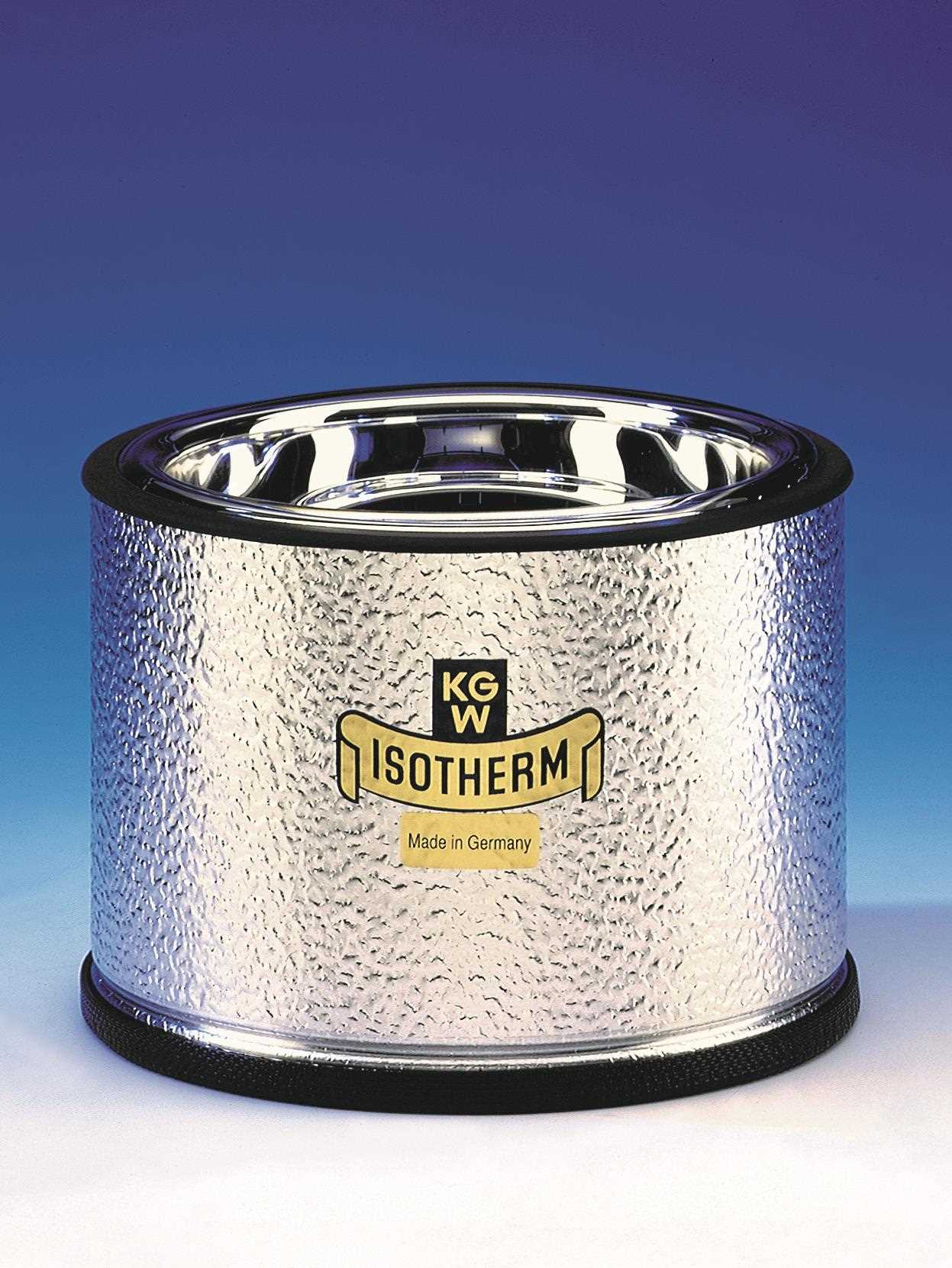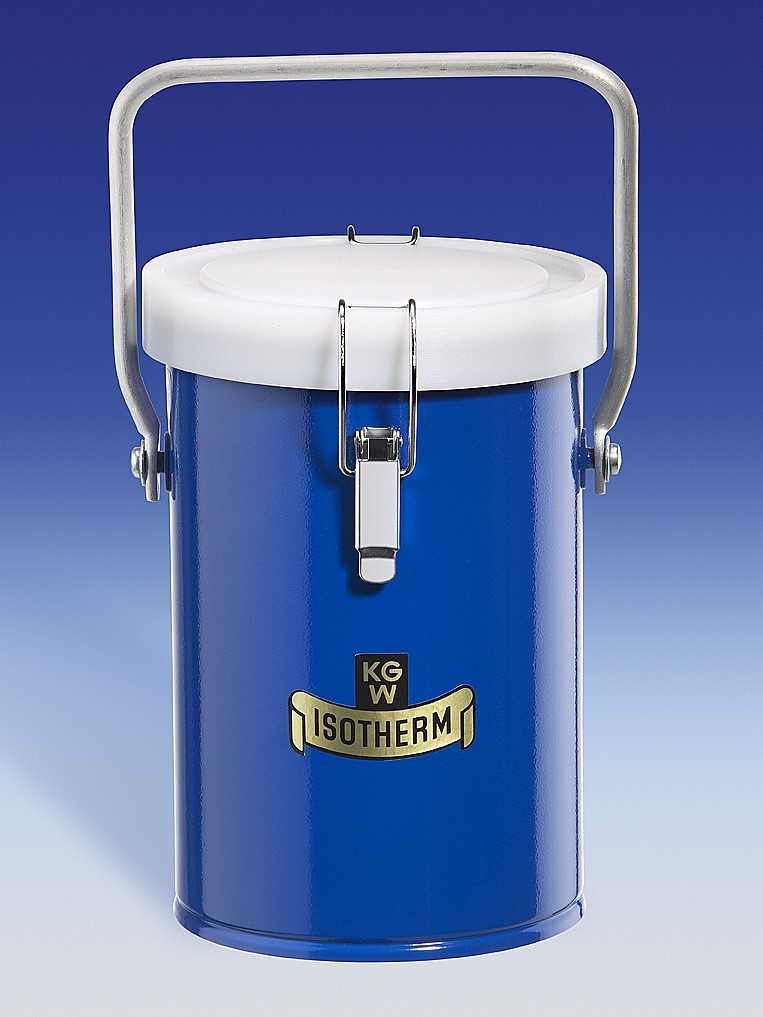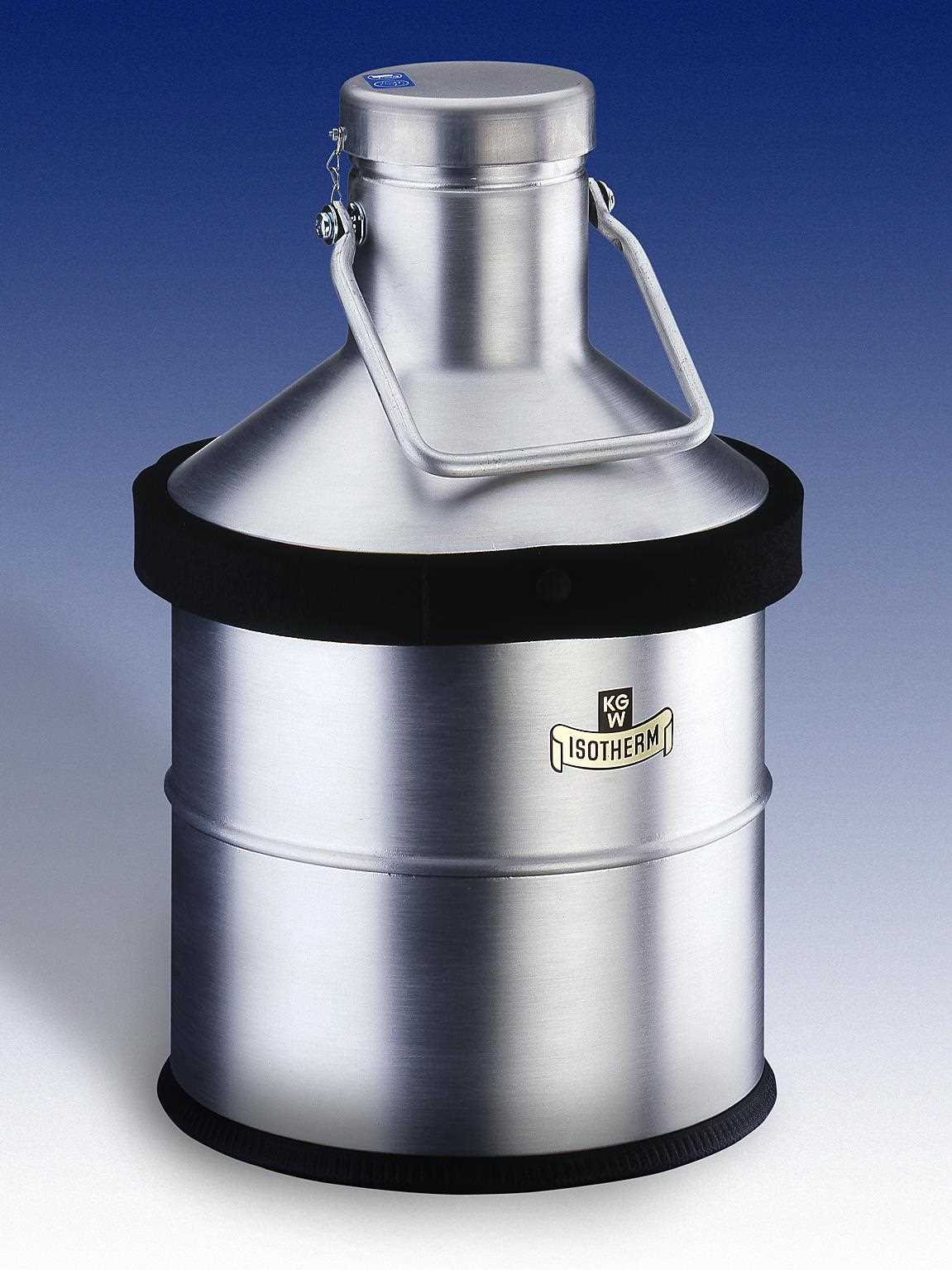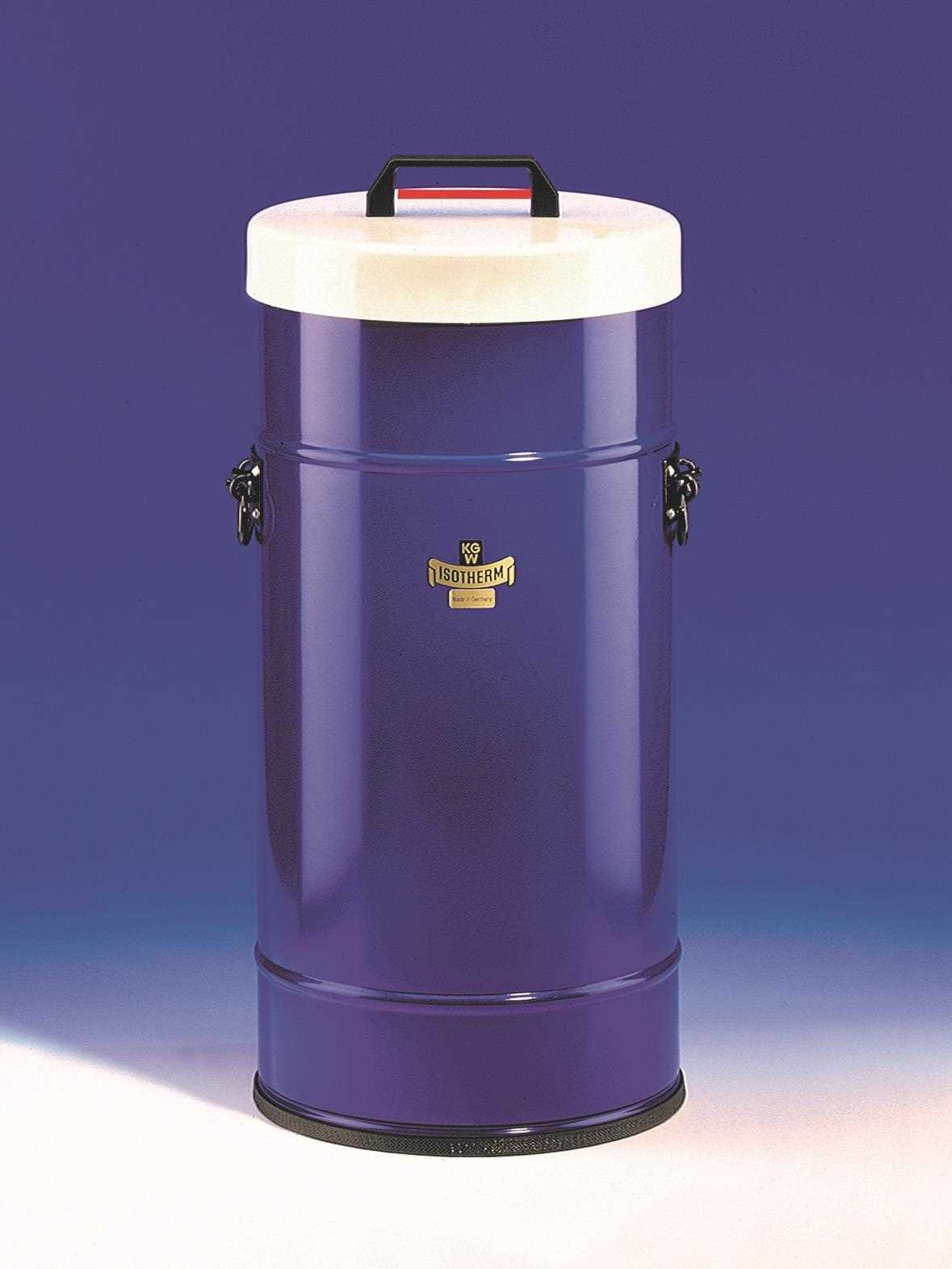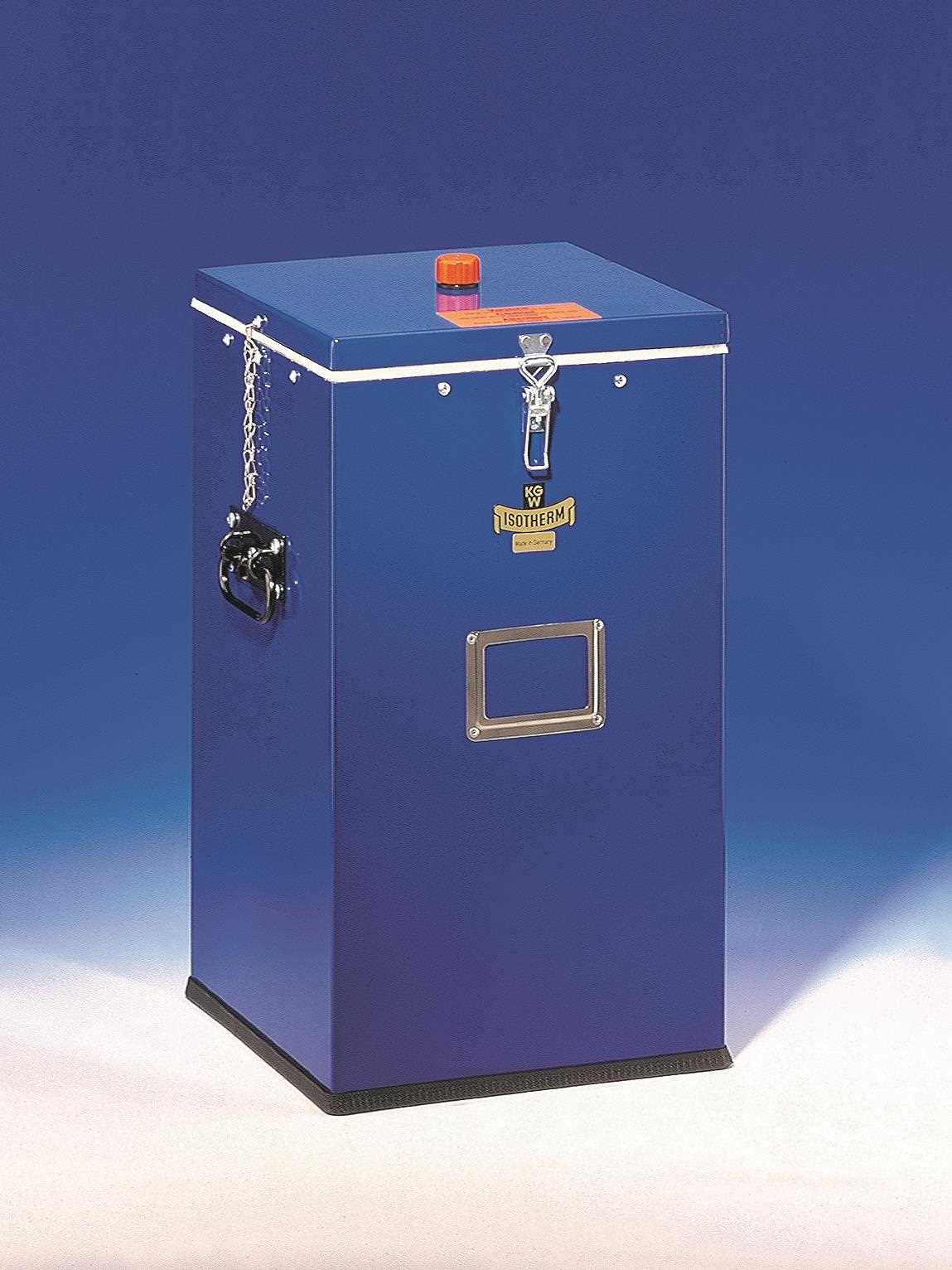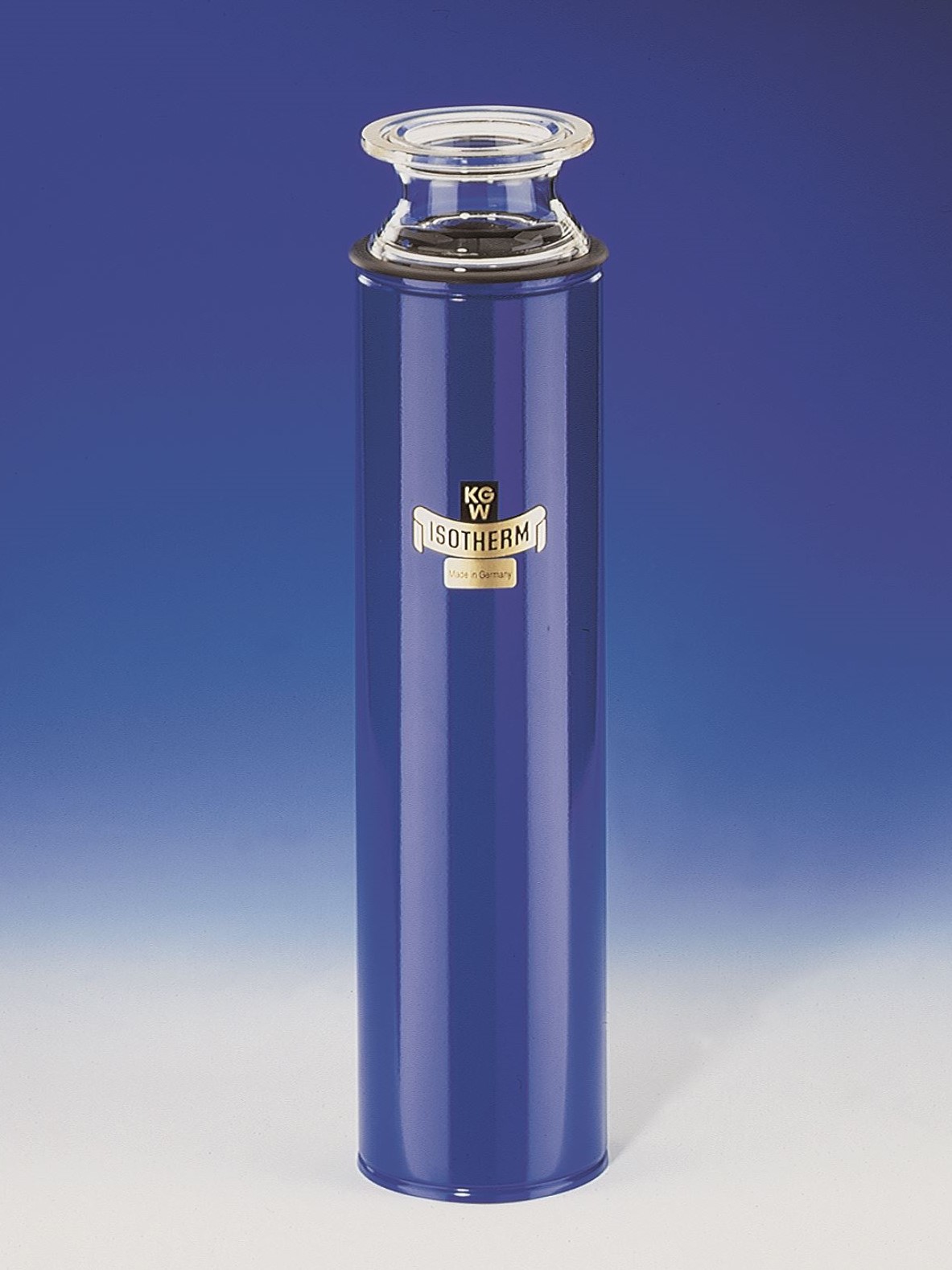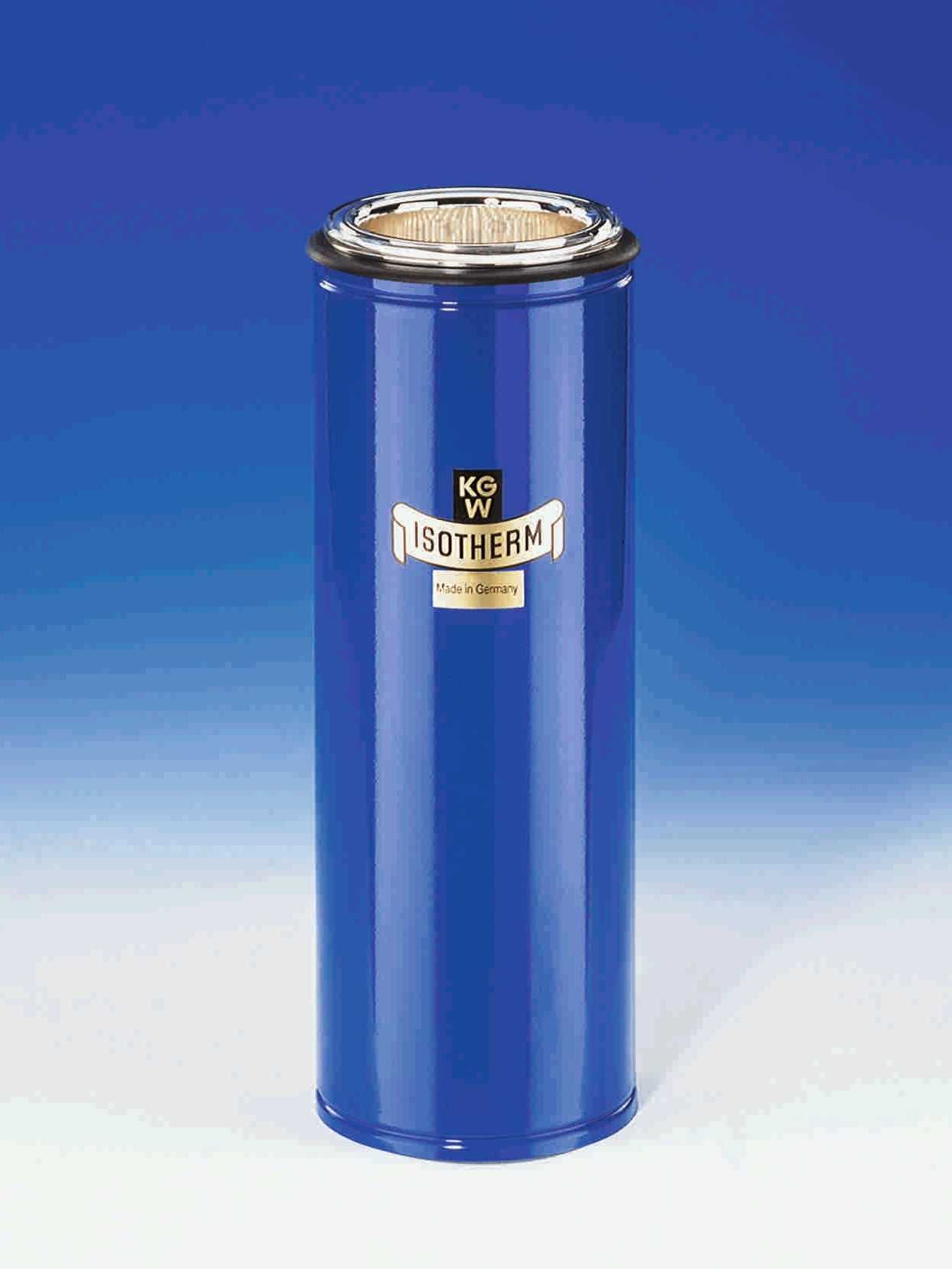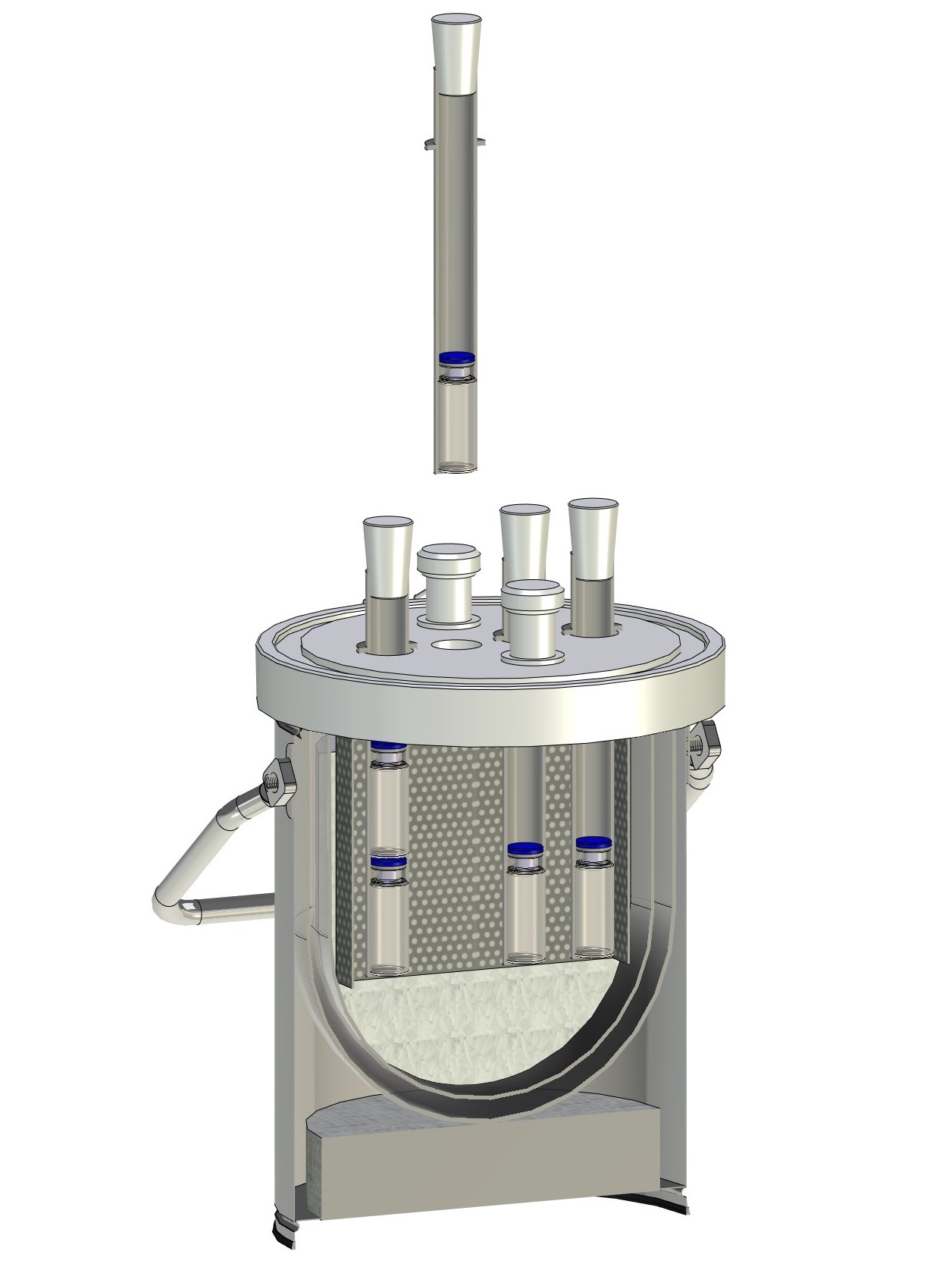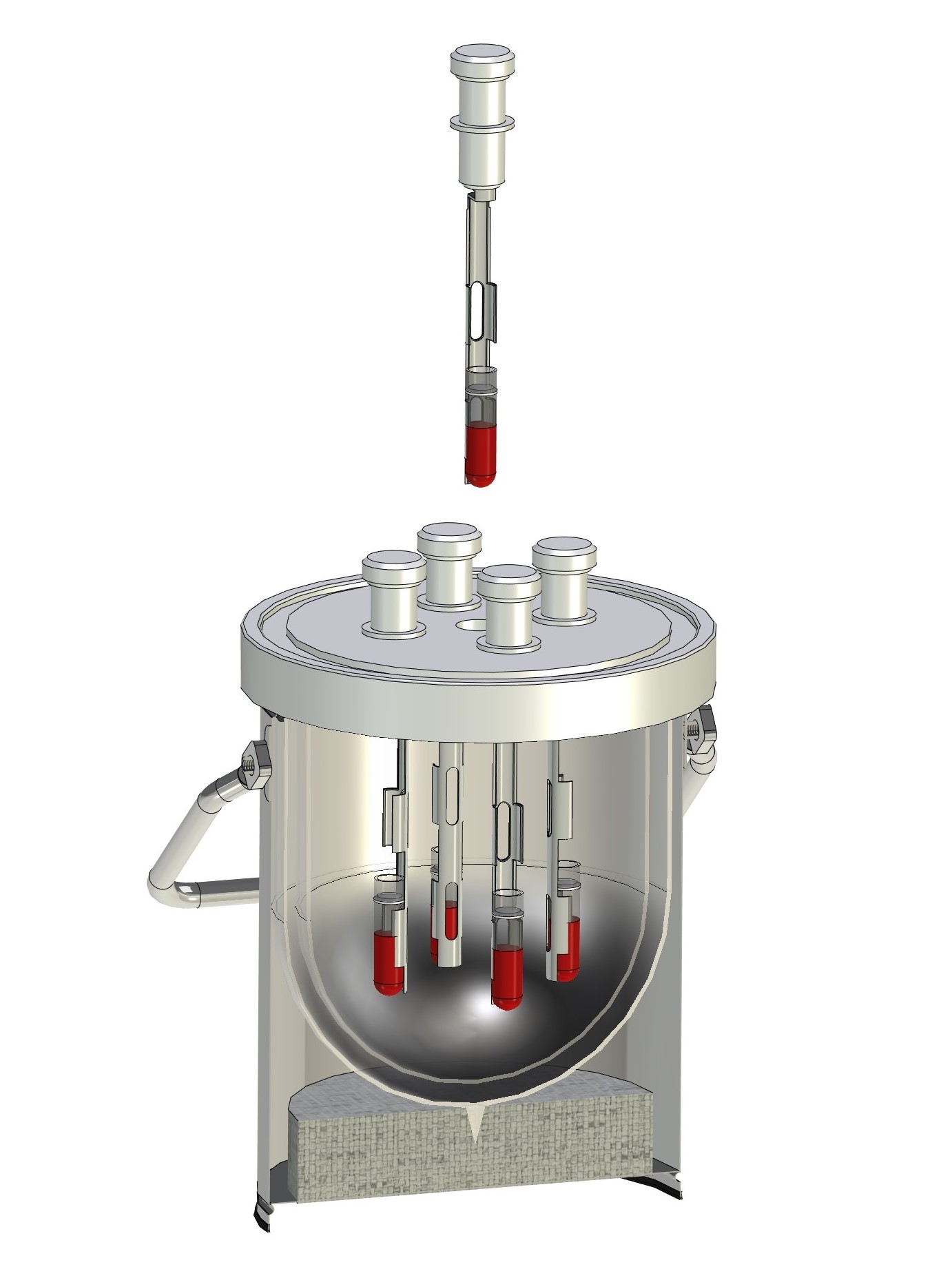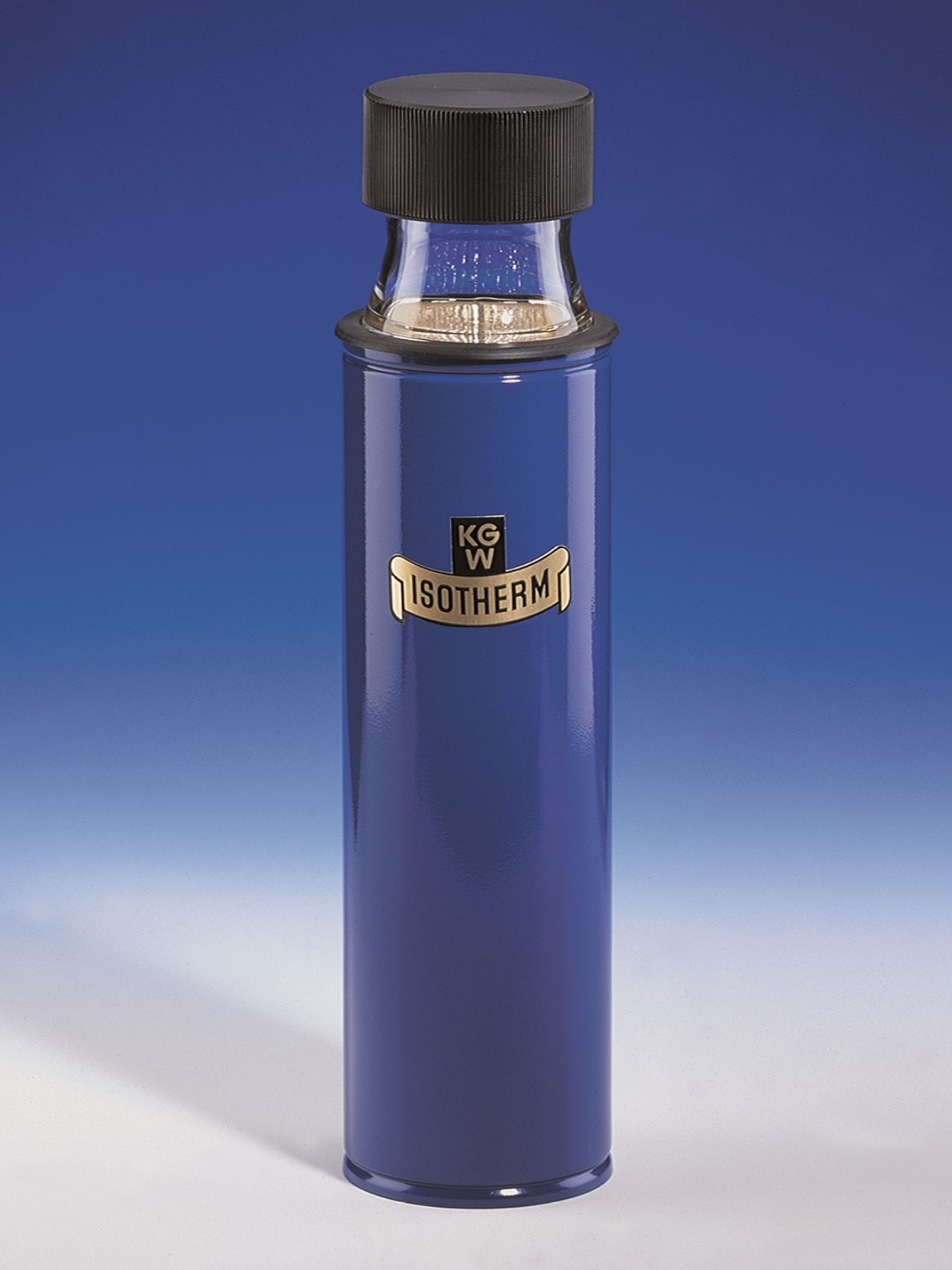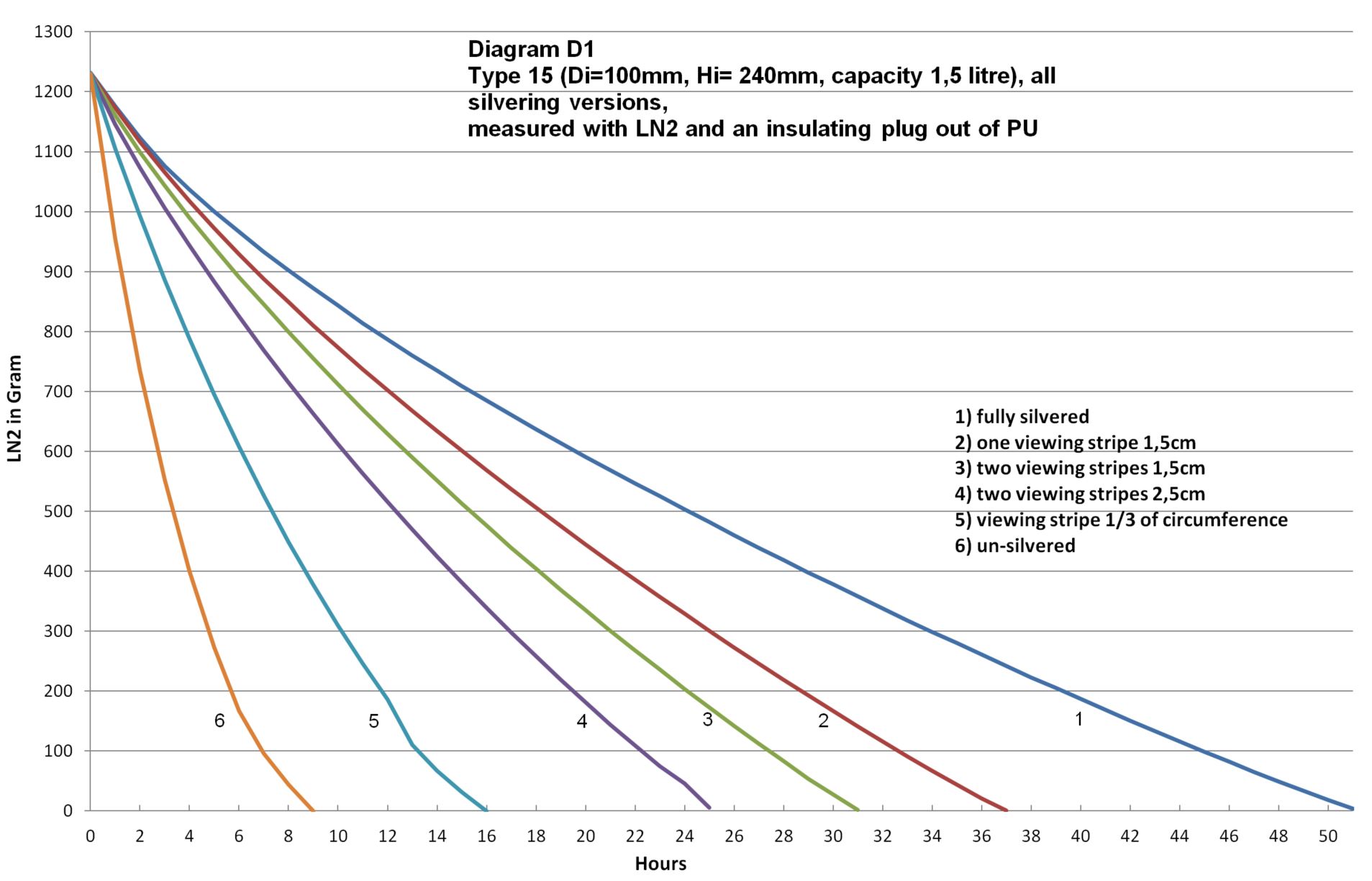Dewar Flasks
Variations
Dewar flasks made of glass
All Dewar flasks manufactured by KGW-ISOTHERM are made of borosilicate glass 3.3 DIN / ISO 3585 made by DWK or Schott Tubing. They are manufactured in compliance with the "Pressure Equipment Directive", Directive 97/23 EC, (N4 with Annex 1) and DIN EN ISO 16496 "Vacuum Insulation Equipment".
Structure and function of a Dewar flask out of glass
Dewar flasks made of glass are double-walled vacuum-insulated containers. They are used to thermally insulate a stored product (LN2, CO2 or other coolant) from the ambient temperature. Dewar flasks consist of an inner and an outer bulb, which are fused together at the top of the neck opening. The space between the inner and outer pistons is vacuum insulated to prevent thermal contact between the products stored in the Dewar with the ambient temperature (contact heat). In addition, Dewar flasks made of glass are equipped with a silver coating in the vacuum space in order to minimize heat radiation. Best insulation can be achieved by reducing both contact heat (vacuum) and radiation heat (silvering). For security and work safety reasons, Dewar flasks made of glass always have to be installed in a protective enclosure. This protective cover can be made of sheet metal, aluminum, stainless steel or a transparent PU coating. All standard glass Dewar flasks only may be used up to a maximum overpressure of 0.1 bar. Higher working pressures on request.

